
views
Checking the Cable Itself
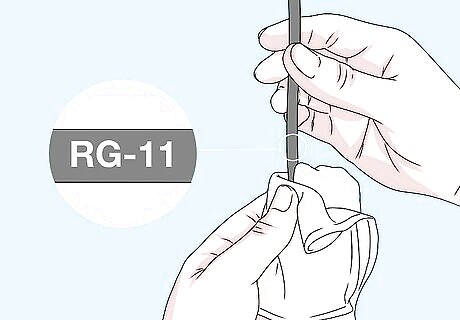
Inspect the cable for markings printed on the sleeve. Wipe down the cable with a damp cloth if it’s dirty so you can see the surface. Look up and down the outer sleeve of your coaxial cable for any markings that include letters and numbers printed on it, especially near the connector at the end of the cable. If you’re having trouble seeing the sleeve or markings, shine a flashlight onto the sleeve to help you see it better. The outer sleeve acts as insulation so there isn’t a risk of shocking yourself by wiping the cable with a damp cloth. You could also use a wet wipe or baby wipe to clean off the cable. The markings may be printed multiple times on the cable’s sleeve and they’ll all include the same letters and numbers.
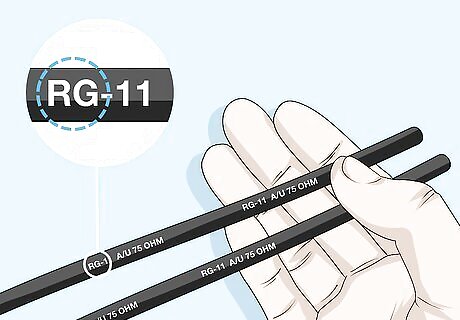
Use the marking to identify the coaxial cable. Coaxial cables commonly use the designation “RG,” which stands for “Radio Guide” and is followed by numbers to form a code that identifies the cable type. Once you find the designation code, you’ve identified the type of coaxial cable!Did you know? The original manual describing the types of coaxial cables was titled “Radio Guide” and each cable’s specifications were described on a specific page, which is where the number comes from. So an RG-6 coaxial cable was on page 6 of the original manual and has kept its name.
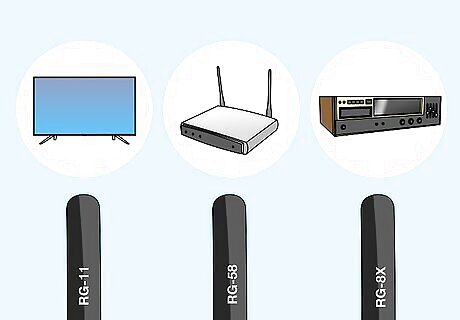
Match the cable to what it’s is used for. Coaxial cables marked RG-6, RG-11, or RG-59 are used for applications such as video signals for TVs. RG-8 and RG-58 cables are commonly used for ethernet and internet connections. RG-8X cables are generally used for amateur radios, also known as ham radios. Search the marking online to find out what the coaxial cable is used for if you can’t determine it.
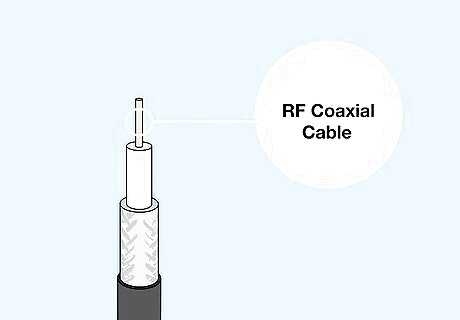
Look for a single pin at the end of the sleeve to identify an RF cable. Radio frequency, or RF coaxial cables, are used to carry radio signals and data for things like radio communications and computers. They can be identified by their connector attached to the end of the cable sleeve, which has a plug with a single pin sticking out of it. RF cables are often less flexible than other coaxial cables as well.
Looking at the Cable’s Use
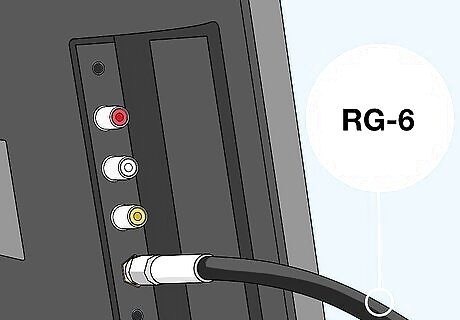
Check the cable used on your TV to identify an RG-6 or RG-11. Cable TV companies use RG-6 coaxial cables to safely deliver channels without extra electrical noise known as static. Check behind your TV to see if your coaxial cable is plugged into it or your cable box. If it is, then it’s an RG-6 cable, as this is the most common one used in residential situations. HDTVs require even more insulation against static, so they use an RG-11 coaxial cable instead of an RG-6.
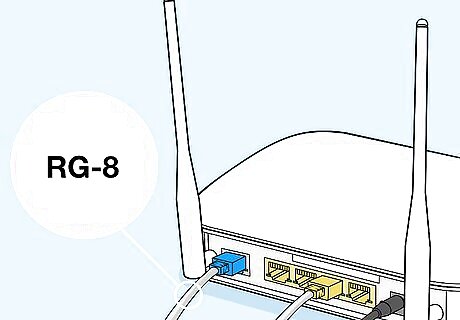
Find your internet or ethernet cable to identify an RG-8. Internet companies use a specific coaxial cable to send a data signal to your home or business that your modem sends to your router to provide internet access. Look near your internet connection to see if a coaxial cable is plugged into it to identify an RG-8 cable. The ethernet cable connected to your computer or TV isn’t a coaxial cable. The coaxial cable is connected to your modem.
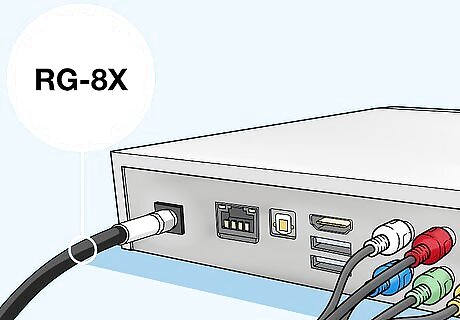
Look at your amateur radio cable to identify an RG-8X. If you have an amateur radio, commonly known as ham radio, then it uses a specific coaxial cable to receive and transmit your signals. Check out the back of your radio to look for an RG-8X coaxial cable connected to it. The RG-8X cable is very similar to an RG-8 cable but is better suited for audio signals.
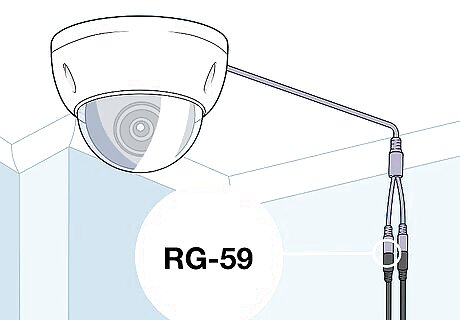
Recognize a CCTV camera cable as an RG-59. Closed-circuit television, or CCTV, is commonly used for surveillance and security purposes and uses a smaller, less insulated coaxial cable to send video signals. Look for the cable that connects the CCTV to a video monitor to find an RG-59 coaxial cable.Note: CCTVs often have a video quality that is poorer than standard TVs, so they don’t need to use the same type of coaxial cable. However, high-quality CCTVs may use an RG-6 cable to send a better video signal.



















Comments
0 comment